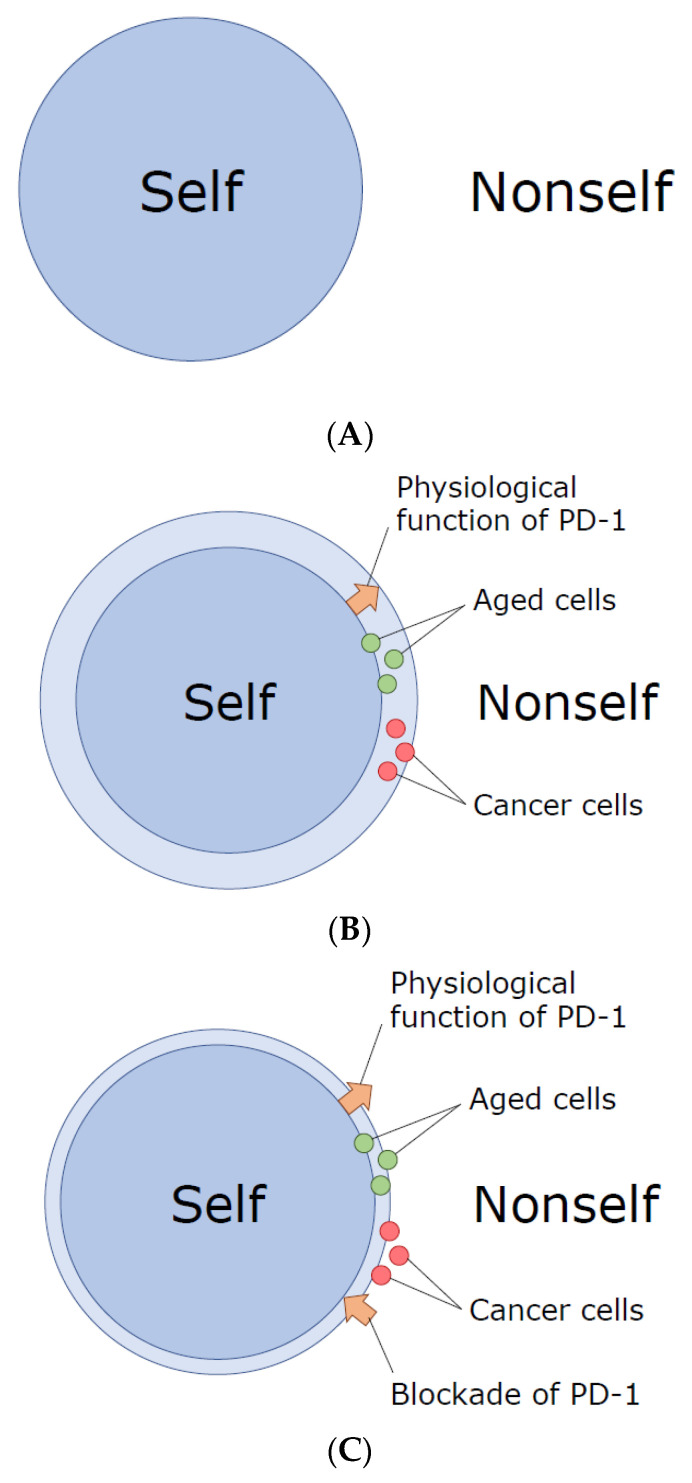Figure 1.
A hypothesis about the physiological function of programmed death-1 (PD-1): Demarcation of the border between ‘slightly altered self’ and ‘nonself’. (A) Originally, when we are young, the border between ‘self’ and ‘nonself’ is obvious. (B) However, subtle changes gradually accumulate as cells age, and the self-nonself border becomes ambiguous. In order to avoid the attacking against ‘slightly altered’ aged somatic cells by the exquisitely evolved immune system of higher vertebrates, we obtained PD-1. Here, PD-1 functions to widen and re-define the border between ‘slightly altered self’ in aged individuals and ‘nonself’. Cancer cells are clever enough to sneak into this chink between the original self and the slightly altered self, so that they can be protected by PD-1 and avoid the immune-cell attack. (C) When we block the activity of PD-1, the self-nonself border moves back (closer) to the original one, and a fraction of cancer cells (and also aged somatic cells) get re-defined as nonself, allowing the highly evolved immune system to attack them.

